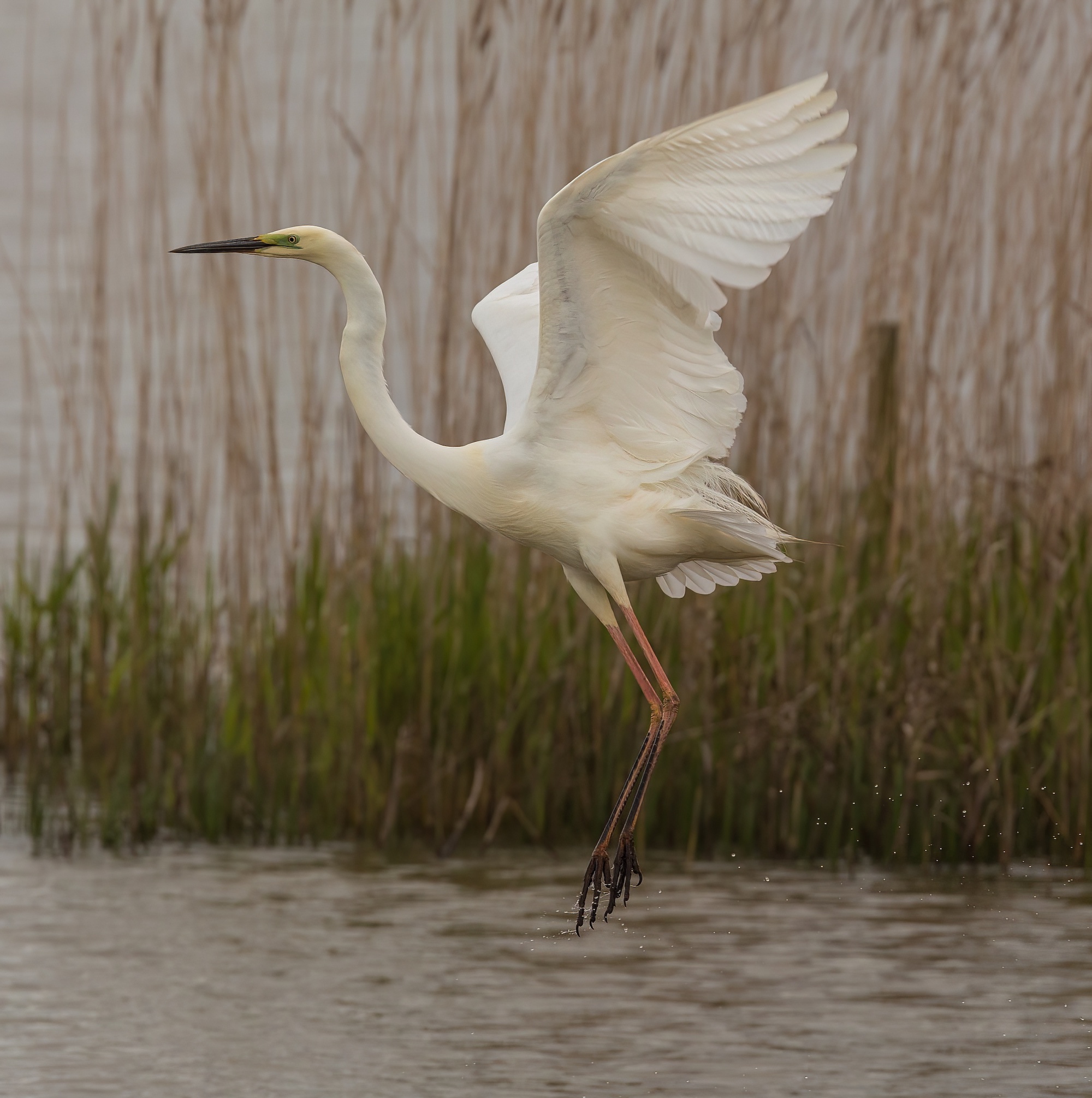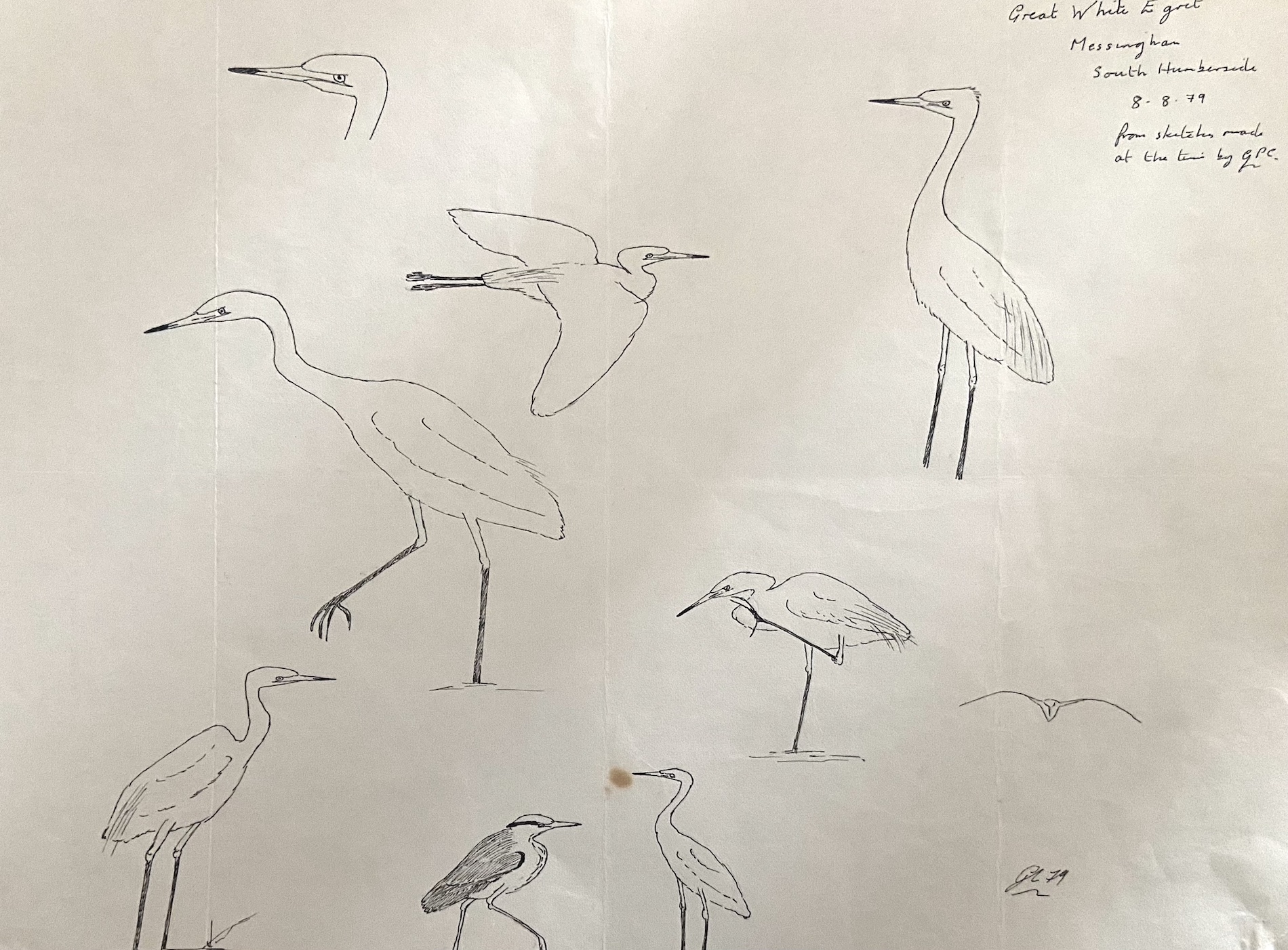Great Egret Ardea alba

Birds have been recorded in the county every month of the year and, given their catholic choice of nest sites (often trees but also reedbeds, artificial nest platforms and even on the ground), and confirmed breeding in neighbouring Norfolk, a breeding attempt may not be far away. They first bred in Britain in 2012, when two pairs fledged four young in Somerset. They have bred every year since to 2018 when 12-18 pairs bred or attempted to breed, including two pairs at one site in Norfolk that raised two young each and three possible pairs in Cambridgeshire. The changing status of Great White Egret in Britain was well covered by Holt (2013) who noted that the source of the increasing numbers in Britain is most likely the Netherlands where there is a well-established breeding population and more than 2,000 wintering.
Finder’s report: Great (White) Egret at Messingham SQ, August 7th-8th, 1979, first county record.
by J. Harriman, D. Suddaby and G. P. Catley.
Note: account taken from the original BBRC submissions by these three observers. Great White Egret was a BBRC submission species at this time and this individual was believed to have also been seen at Hickling, Norfolk, August 10th-18th. There was just one other individual in 1979 near Whitby, Yorks., July 15th. There were only 10 accepted British records in all from the formation of BBRC in 1958 up to 1979.
Circumstance
On the evening of August 7th, 1979, after a phone call to say there was a probable Great White Egret at Messingham SQ, I arrived at the site at approximately 18.00hr. to find a large white heron species stood in some shallow water about 40 ft. away from myself and a friend (JH). The striking feature of the bird was its white plumage. After watching it for approximately 10 minutes with a pair of 10x50 Zenith binoculars, the bird lifted and flew around for about 10 minutes and in flight the main features were its long legs and large white wings. The bird then alighted in the same place as before and began to preen and feed for a while. It fed by a number of methods, stalking like Grey Heron, trembling feet, and stabbing at prey, and fluttering over the water with legs submerged to disturb prey. On two occasions it could be seen to be preying on young frogs and toads which were abundant on the pool edges. By this time several local birdwatchers were present. At approximately 20.00 hr. the bird lifted off again and flew around and this time alighted in a wood clearing where it’s known that there is small pond. We departed.
The next day I arrived at approximately 07.00 hr. to find this bird fishing in about the same place as it was on the night before. It then began to move around feeding in several places giving some good views. It was later joined by two Grey Herons, and they fed together. The bird finished fishing at approximately 09.00 hr. and stood on the edge of a ploughed field in some rough grass. After about one hour, at approximately 10.00 hr., the bird lifted and flew around circling high until the bird could hardly be seen, and it flew off in an easterly direction.
Description
The whole plumage was white in colour and when it stood, white ‘plumes’ or aigrettes could be seen extending from the back. No crest could be seen on the head, at least no long crest feathers extending from the head were visible.
The bill was quite long but not as broad as that of Grey Heron. The colour of the bill was black along half the length to the tip and then yellow leading into a pale green area towards the gape.
The legs were quite long compared to those of the Grey Heron and from the feet to just above the knee they were black and for the rest of the length they were yellow. In flight the legs projected well beyond the tail. The neck was much longer and more slender than Grey Herons, always having pronounced curves and bends in it.
The eyes were yellow, and the gape reached behind the eyes.
The build of this bird was slimmer than that of a Grey Heron which it could be easily compared to, and it seemed higher in its stance than a Grey Heron. Flight was with easy slow wing-beats, more graceful than Grey Heron. One secondary was preened out on 7th, and a couple were missing in flight. Call heard once when disturbed was a ‘kaark’, weaker and higher pitched than Grey Heron.
Identification
This bird was clearly a Great White Egret (Egretta alba) and not a Little or Intermediate Egret because of its size and bill colour, and it was not an albino (Grey) Heron as it was so different from the Grey Heron nearby in its size and build. Identification was checked by using the field guide ‘Birds of Britain and Europe’, Peterson, Mountfort and Hollom, and also by referring to ‘The Encyclopaedia of Birds’ magazine (volume 1, parts 6 and 7).

Great White Egret sketches, August 7th 1979, Messingham SQ (Graham Catley).
Reference
Holt, C. (2013). The changing status of Great White Egret in Britain. British Birds 106(4): 246-257.
(Account as per new Birds of Lincolnshire (2021), included September 2022)
